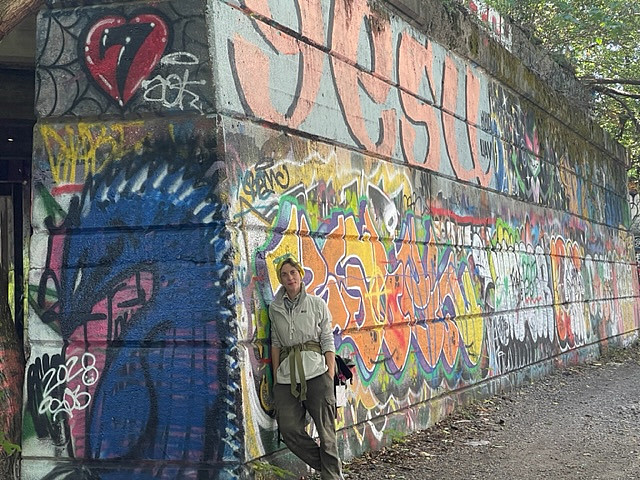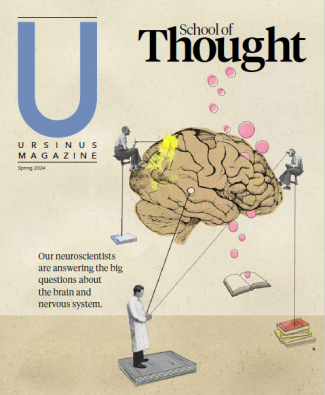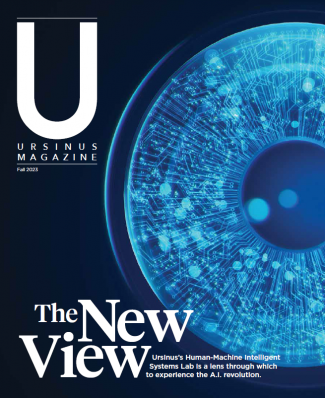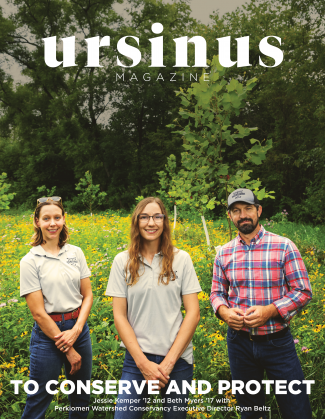
A Deep Dive Into Philadelphia Enhances the Study of the Origins of Cities
Students in the “Rise of Urbanism” course joined “Philly 101” students for a 12-mile walk along the perimeter of Philadelphia last semester to gain new insights into the city.
Now in its 7th year, Walk Around Philadelphia is a biannual event organized by JJ Tiziou, a West Philly artist and community organizer who creates projects that “bring humans together.” Visiting Instructor of Anthropology Katharine Davis attended the University of Pennsylvania with Tiziou as an undergraduate. She decided that students in her “Rise of Urbanism” course—which explores the origins of agriculture, urban life, and state-level societies—would benefit from participating in the walk. Students enrolled in Professor of Philosophy and Religious Studies Kelly Sorensen’s “Philly 101” course as part of the Philadelphia Experience also joined the walk.
The group followed the Delaware River from a train station in Bridesburg in the Northeast to Pier 68 in South Philly, stopping along the way to explore abandoned graffiti-covered coal piers, ruins of factories, wooded areas, and active work sites.
“These are landscapes I often whiz by in a car on I-95, but walking the distance—at times along abandoned train tracks—and experiencing the places with other community members gives you a much different perspective,” said Davis. “It brought up questions of boundaries of cities. Walking along the Delaware River highlights how important waterways can be to cities along their shores, in all their shipping glory. The walk also highlighted the stark economic divides present in cities, as at one point we would be respectfully avoiding temporary shelters in the woods and then in the next 100 meters we would encounter newly laid grass seed and brand-new million-dollar riverfront condos.”
Davis’s work focuses on the Tiwanaku culture dating from 600 to 1000 C.E., with particular interest in the lives of the people who built their households and workspaces on the outskirts of the largest city, Tiwanaku. “I’ve been spending a lot of time thinking about what makes a ‘city’ from the perspectives of folks outside the center,” said Davis.
“The action, the architecture, the heightened concern for clean water and waste and sewage disposal, the population density, and—one of the most important social situations in a city—the utter likelihood of encountering ‘strangers’ all describe aspects of the urban social experience that, in a lot of important ways, transcend time and space. How does living (in the past or today) in a landscape of such diverse identities shape experiences and possibilities of the city? I hope this exploration helped students add to their ‘How should we live together?’ arsenal of experiences.


